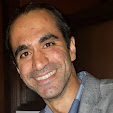By Seraj Assi
On July 22, 1946, a group of operatives from the Zionist group Irgun, disguised as Arab waiters, delivered milk cans filled with 500 pounds of high explosives to the basement of the King David Hotel in Jerusalem. The 'milkmen' set a timer to detonate the explosives thirty minutes later.
Menachem Begin, the group's leader who later
became Israel's prime minister and went on to win the Nobel Peace Prize,
later boasted: "Twelve thirty-one, thirty-two. Zero hour drew near. The
half-hour was almost up. Twelve-thirty-seven… suddenly the whole town seemed to
shudder."
The explosives, which detonated beneath a public café at the
peak of the lunch hour, shattered the entire wing from the hotel and collapsed
its six stories into the basement. Nearly 100 people were killed and 100 more
wounded in the explosions, including Britons, Arabs, and Jews.
While they were met with global outrage, the attacks did
achieve their goal. The following year, the British Mandate withdrew from
Palestine, and shortly after, Israel declared independence.
Following the British withdrawal, the Zionist groups
directed their terrorist tactics against Palestinians, which included countless
bombings of civilian targets.
On December 12, 1947, the Irgun parked a car bomb opposite
the Damascus Gate, the main entrance to the Old City of
Jerusalem, killing 20 people. On 4 January 1948, the Lehi detonated a
lorry bomb near Jaffa's Town Hall, killing 15 Palestinians and wounding
100 others. On January 6, the Haganah bombed the Semiramis Hotel in
Jerusalem, killing 24 civilians. The next day, Irgun members in a stolen
police van rolled a barrel bomb into a large group of
Palestinian civilians waiting for a bus near the Jaffa Gate, killing 20 of
them. On February 18, a bomb planted but the Irgun detonated in the Ramla
market, killing scores of Arab residents. On 28 February,
the Palmach launched a bombing attack on a garage in Haifa,
killing 30 Palestinians.
Come the spring, the Zionist forces would take their
terrorist tactics to a large-scale, systemic, and all-out ethnic cleansing
campaign, which included collective executions, mass expulsion, and
wholesome destruction of Palestinian towns and villages.
On April 9, 1948, about 130 fighters from the
Irgun and Lehi groups stormed into Deir Yassin, a village
of roughly 600 people near Jerusalem, and massacred over
200 Palestinians, men, women and children. An Israeli soldier later
described the Zionist tactic bluntly: “We're putting in explosives and running
away. An explosion and move on, an explosion and move on and within a few
hours, half the village isn’t there anymore."
On May 23, the IDF'S Alexandroni Brigade rounded over 200
Palestinian villagers in Tantura near Haifa, a village of roughly 1500
residents, and massacred them in cold blood. A Jewish eyewitness later
recalled. "It was one of the most shameful battles fought by the IDF. . .
they did not leave anyone alive."
On July 11, in what is known as the Lydda Death March,
Israeli forces stormed into the Arab town of Lydda, where they massacred
hundreds of residents, and expelled some 70,000 Palestinians. During
Operation Danny, as Israel dubbed the massacre, 89th Israeli
battalion mounted on armored cars and jeeps and raided the city "spraying
machine-gun fire at anything that moved," to cite Israeli historian Benny
Morris.
On October 29, the IDF's 89th Commando Battalion, which
was composed of former Irgun and Lehi forces and commanded
by Moshe Dayan, invaded the Palestinian village of Dawayima, killed
hundreds of civilians, and raped dozens of women. In a horrifying testimony by an Israeli soldier eyewitness:
"There was no battle and no resistance. The first conquerors killed from
eighty to a hundred Arabs, including women and children. The children were
killed by smashing of their skulls with sticks. There was not a house without
dead."
Describing the Zionist tactics in Dawayima, the former
soldier added: "In the town were left male and female Arabs, who were put
into houses and were then locked in without receiving food or drink. Later
explosive engineers came to blow up the houses."
In one horrifying episode, "One soldier boasted that he
raped an Arab woman and afterwards shot her. An Arab woman with a days-old
infant was used for cleaning the back yard where the soldiers eat. She serviced
them for a day or two, after which they shot her and the infant."
On October 30, the IDF'S 7th Brigade, under the command of
General Moshe Carmel, stormed into the northern Palestinian village of
Saliha and butchered 100 Palestinians. On October 31, the Zionist forces
executed more than eighty villagers in the nearby village of Hula.
In the nearly 70 massacres committed
by Israel in 1948, hardly a Palestinian village was spared.
These massacres and mass expulsions culminated in what Palestinians call the
Nakba. The Zionist atrocities sent shock waves across Palestinian towns and
villages, and left an indelible mark of horror in Palestinian memory. Shocked
and terrorized, Palestinians had no resistance left in them. By the end of
1948, tens of thousands of Palestinians had been killed, and nearly one million
expelled.
The ethnic cleansing of Palestine was underway.

